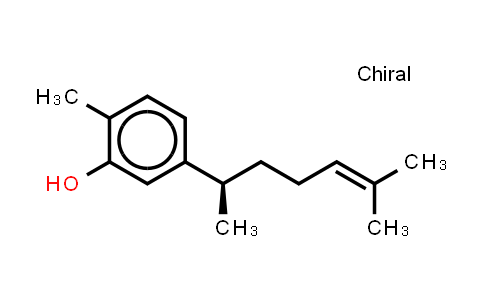
Xanthorrhizol NLT 98%
Product Number : MC547285
CAS Number : 30199-26-9
Molecular Formula : C15H22O | Molecular Weight : 218.33
Quote Request| Purity | NLT 98% |
|---|---|
| Storage | at 20ºC 2 years |
| MolCore specializes in manufacturing high-purity CAS No.30199-26-9, Xanthorrhizol with the molecular formula C15H22O and molecular weight 218.33 delivering critical API intermediates for global pharmaceutical and research industries, certified under ISO quality systems. | |
* The above information is for reference only.
| Chemical Name | Xanthorrhizol |
|---|---|
| CAS Number | 30199-26-9 |
| MDL Number | MFCD03453037 |
| Molecular Formula | C15H22O |
| Molecular Weight | 218.33 |
Xanthorrhizol, isolated from Curcuma xanthorrhiza Roxb, is a potential antibacterial agent. In Vitro: Xanthorrhizol is a potential antibacterial agent from Curcuma xanthorrhiza against streptocpccus mutants[1]. SEM analysis shows that, treatment of Candida species with MIC of Xanthorrhizol affects the external morphology of these yeasts. Cells incubated in the presence of Xanthorrhizol demonstrate a greater tendency to clump compared with the control cultures. Xanthorrhizol treated C. glabrata cells shows minor abnormalities without a smooth or a slightly awkward surface. Xanthorrhizol-treated Candida cells exhibit deformation and protrusions on the cell surface, which is more clearly demonstrated with C. guilliermondii and C. parapsilosis. In general, Candida exposed to, Xanthorrhizol at concentrations 1 x MICs exhibits substantial ultrastructural abnormalities such as shape deformation, protrusion, rugged cells surface, and clumping[2]. In Vivo: Ear edema induced by the topical application of TPA is suppressed by pre-treatment with Xanthorrhizol in a doserelated manner (P<0.005). Topical application of Xanthorrhizol alone does not induce ear edema in mice. All the mice treated with 7.5 nM TPA for 19 weeks after initiation by DMBA developed an average of 15.5±2.3 skin tumors per mouse (tumor multiplicity). Pre-treatment with 2 and 6 μM Xanthorrhizol reduces tumor multiplicity to 6.9±1.1 (P<0.005) and 4.0±1.1 (P<0.005), respectively, at 19 weeks. In addition, Xanthorrhizol at 2 and 6 μM dose dependently lowers the percentage of tumor-bearing mice (tumor incidence) to 80 and 57%, respectively, at the termination of the experiments. Furthermore, the tumor multiplicity (P<0.05) and incidence are reduced in the DMBA-initiated mice that are topically treated with Xanthorrhizol for 6 weeks after the induction of papillomas with hyperplasia, mild dysplasia and moderate dysplasia by topical TPA application for 6, 18 and 24 weeks, respectively. The increased ODC expression in mouse epidermis with acute inflammation and tumor promotion induced by TPA is inhibited by pre-treatment with Xanthorrhizol in a dose-dependent manner. The topical application of Xanthorrhizol after the induction of papillomas with hyperplasia and dysplasia also potently inhibited ODC expression[3].
© Copyright 2015-2025 Hangzhou MolCore BioPharmatech Co.,Ltd. All rights reserved.
